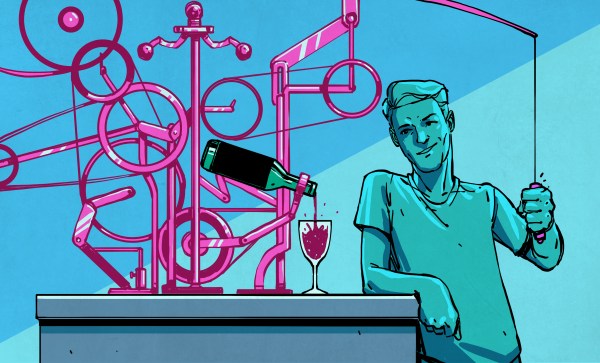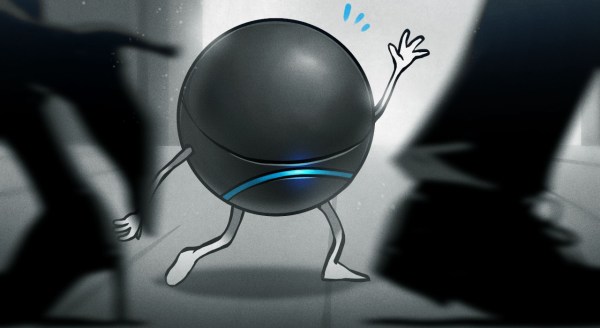Ho-hum — another week, another high-profile bricking. In a move anyone could see coming, Humane has announced that their pricey AI Pin widgets will cease to work in any meaningful way as of noon on February 28. The company made a splash when it launched its wearable assistant in April of 2024, and from an engineering point of view, it was pretty cool. Meant to be worn on one’s shirt, it had a little bit of a Star Trek: The Next Generation comm badge vibe as the primary UI was accessed through tapping the front of the thing. It also had a display that projected information onto your hand, plus the usual array of sensors and cameras which no doubt provided a rich stream of user data. Somehow, though, Humane wasn’t able to make the numbers work out, and as a result they’ll be shutting down their servers at the end of the month, with refunds offered only to users who bought their AI Pins in the last 90 days.
Slider4880 Articles
Multitasker Or Many Monotaskers?
In Al Williams’s marvelous rant he points out a number of the problems with speaking to computers. Obvious problems with voice control include things like multiple people talking over each other, discerning commands from background conversations, and so on. Somehow, unlike on the bridge in Star Trek, where the computer seems to understand everyone just fine, Al sometimes can’t even get the darn thing to play his going-to-sleep playlist, which should be well within the device’s capabilities.
In the comments, [rclark] suggests making a single button that plays his playlist, no voice interaction required, and we have to admit that it’s a great solution to this one particular problem. Heck, the “bedtime button” would make fun project in and of itself, and it’s such a limited scope that it could probably only be an weekend’s work for anyone who has touched the internals of their home automation system, like Al certainly has. We love the simplicity of the idea.
But it ignores the biggest potential benefit of a voice control system: that it’s a one-size-fits-all solution for everything. Imagine how many other use cases Al would need to make a single button device for, and how many coin cell batteries he’d be signing himself up to change out over the course of the year. The trade-off is that the general purpose solution tends not to be as robust as a single-tasker like the button, but also that it can potentially simplify the overall system.
I suffer this in my own home. It’s much more a loosely-coupled web of individual hacks than an overall system, and that has pros and cons. Each individual part is easier to maintain and hack on, but the overall system is less coordinated than it could be. If we change the WiFi password on the home automation router, for instance, I’m going to have to individually log into about eight ESP8266s and change their credentials. Yuck!
It’s probably a matter of preference, but I’ll still take the loose, MQTT-based system that I’ve got now over an all-in-one. Like [rclark], I value individual device simplicity and reliability above the overall system’s simplicity, but because our stereo isn’t even hooked up to the network, I can’t play myself to sleep like Al can. Or at least like he can when the voice recognition is working.
Hackaday Podcast Episode 309: Seeing WiFi, A World Without USB, Linux In NES In Animal Crossing
This week Hackaday Editors Elliot Williams and Tom Nardi start things off with updates on the rapidly approaching Hackaday Europe and the saga of everyone’s favorite 3D printed boat.
From there they’ll cover an impressive method of seeing the world via WiFi, Amazon’s latest changes to the Kindle ecosystem, and an alternate reality in which USB didn’t take over the peripheral world. You’ll also hear about a multi-level hack that brings the joys of Linux into the world of Animal Crossing, 3D printed circuit components, and the imminent release of KiCAD 9.
Stick around until the end to learn about a unique hardened glass from East Germany and the disappointing reality of modern voice control systems.
This Week In Security: OpenSSH, JumbledPath, And RANsacked
OpenSSH has a newly fixed pair of vulnerabilities, and while neither of them are lighting the Internet on fire, these are each fairly important.
The central observation made by the Qualsys Threat Research Unit (TRU) was that OpenSSH contains a code paradigm that could easily contain a logic bug. It’s similar to Apple’s infamous goto fail; SSL vulnerability. The setup is this: An integer, r, is initialized to a negative value, indicating a generic error code. Multiple functions are called, with r often, but not always, set to the return value of each function. On success, that may set r to 0 to indicate no error. And when one of those functions does fail, it often runs a goto: statement that short-circuits the rest of the checks. At the end of this string of checks would be a return r; statement, using the last value of r as the result of the whole function.
Continue reading “This Week In Security: OpenSSH, JumbledPath, And RANsacked”
FLOSS Weekly Episode 821: Rocky Linux
This week, Jonathan Bennett talks Rocky Linux with Gregory Kurtzer and Krista Burdine! Where did the project come from, and what’s the connection with CIQ and RESF? Listen to find out!
Retrotechtacular: Yamming CRT Yokes
Those of us who worked in TV repair shops, back when there was such a thing, will likely remember the cardinal rule of TV repair: Never touch the yoke if you can help it. The complex arrangement of copper wire coils and ferrite beads wrapped around a plastic cone attached to the neck of the CRT was critical to picture quality, and it took very little effort to completely screw things up. Fixing it would be a time-consuming and frustrating battle with the cams, screws, and spacers that kept the coils in the right orientation, both between themselves and relative to the picture tube. It was best to leave it the way the factory set it and to look elsewhere for solutions to picture problems.
But how exactly did the factory set up a deflection yoke? We had no idea at the time, only learning just recently about the wonders of automated deflection yoke yamming. The video below was made by Thomson Consumer Electronics, once a major supplier of CRTs to the television and computer monitor industry, and appears directed to its customers as a way of showing off their automated processes. They never really define yamming, but from the context of the video, it seems to be an industry term for the initial alignment of a deflection yoke during manufacturing. The manual process would require a skilled technician to manipulate the yoke while watching a series of test patterns on the CRT, slowly tweaking the coils to bring everything into perfect alignment.
Be Careful What You Ask For: Voice Control
We get it. We also watched Star Trek and thought how cool it would be to talk to our computer. From Kirk setting a self-destruct sequence, to Scotty talking into a mouse, or Picard ordering Earl Grey, we intuitively know that talking to a computer is better than typing, right? Well, computers talking back and forth to us is no longer science fiction, and maybe we aren’t as happy about it as we thought we’d be.
We weren’t able to pinpoint the first talking computer in fiction. Asimov and van Vogt had talking computers in the 1940s. “I, Robot” by Eando Binder, and not the more famous Asimov story, had a fully speaking robot in 1939. You could argue that “The Machine” in E. M. Forster’s “The Machine Stops” was probably speaking — the text is a little vague — and that was in 1909. The robot from Metropolis (1927) spoke after transforming, but you could argue that doesn’t count.
Meanwhile, In Real Life
In real life, computers weren’t as quick to speak. Before the middle of the twentieth century, machine-generated speech was an oddity. In 1779, a mechanical contrivance by Wolfgang von Kempelen, famous for the mechanical Turk chess-playing automaton, could form simple words. By 1939, Bell Labs could do even better speech synthesis electronically but with a human operator. It didn’t sound very good, as you can see in the video below, but it was certainly expressive.
Continue reading “Be Careful What You Ask For: Voice Control”

















